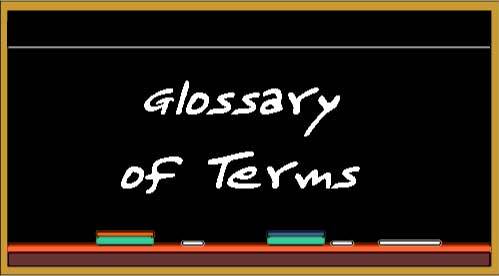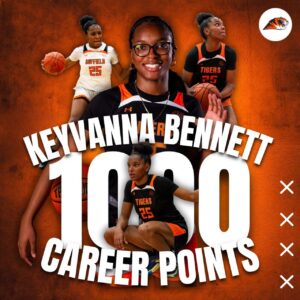Here is a Recruiting Glossary For Parents
ACT/SAT: Standardized tests used by colleges for admissions purposes. Students must meet minimum requirements for these tests for the NCAA Eligibility Center and to meet individual college requirements.
Keywords: NCAA Clearinghouse, Initial eligibility center
Admissions Contact: Postcard, letter, email, package, and/or phone call directly from a college admissions department.
AP: Advanced placement classes offered by a high school. College-level classes. Placement of a college freshman in an advanced class based on work completed in high school. Most often colleges and universities use the College Board’s Advanced Placement Tests for advanced placement. Advanced placement may be given with or without credit hours.
pplication Waiver: A coach’s waiver of the fee for applying to an institution
Keywords: Application Fee Waiver, College Application Waiver
COA: See “Cost of Attendance”
Club Teams: Select teams of advanced high school, middle school, or elementary school players. Club teams are by invitation only and represent the top swimmers, volleyball, soccer, and softball players.
Keywords: Club hockey/soccer/baseball/volleyball teams, top club teams, best club teams, club sport teams, youth club teams, team clubs, swim team club, club team at, club team for, the club team, junior teams, fc teams, pool teams, region teams, county teams, travel teams
Coach Contact: Questionnaire, camp brochure, letter, email, phone call, or text message directly from a member of the coaching staff
Keywords: Contact coaches, coaching contact
Combine: High-intensity showcases where student-athletes perform a series of grueling tests before coaches, recruiters, and scouts. Combines provide a venue for student athletes to be evaluated individually and in great detail. Attendance is by invitation only, and combines generally consist only of the nation’s top players.
Keywords: National Combine, elite combine, junior combine, combine events, top combine, sports combine, national underclass combine, combine game, combine data
Contact: An exchange of information between a coaching staff or admissions department and a prospective student-athlete, Contacts include camp brochures, letters, questionnaires, emails, phone calls, and tape requests.
Keywords: Initial contact
Contact Period:The period when a coach may have in person contact with a student or his/her parents on or off college campus. The coach may watch the student compete or visit the high school.
Keywords: Early contact period, no contact period, pre contact period, recruiting contact period, football/basketball contact period
Core Courses: High school classes required by the NCAA Initial Eligibility Clearinghouse. These include English, Math, Natural/Physical Science, Social Science, Foreign Language, Religion, or Philosophy. Refer to the NCAA Eligibility Center regulations.
Keywords: clearinghouse core courses
Cost of Attendance: The total cost of attending a school, the Cost of Attendance (COA) is an important factor in determining a student’s financial aid needs.
Keywords: Scholarships
Dead Period: Periods of time during which it is not permissible for a coach to make in-person recruiting contacts or evaluating on-or off-campus or permit official or unofficial visits
Keywords: Sports dead period, summer dead period, recruiting dead periods, dead period for recruiting, dead period in recruiting, when is the dead period
EFC: See “Expected Family Contribution”
Early Action: Nonbinding plan that requires an athlete to submit his or her application in early fall (usually by November 1 or 15).The college lets the student know whether he or she is accepted by early January, but the student has the right to wait until May 1 before responding. This gives a student-athlete time to compare colleges, including financial aid offers, before making a decision.
Early Decision: A binding agreement whereby a student-athlete accepts an offer prior to National Letter of Intent Day. A student can apply Early Decision to only one college.
Equivalency Sports: Programs that fall into this category – all sports other than men’s basketball, women’s basketball, football, women’s gymnastics, women’s tennis, and women’s volleyball – can offer full or partial scholarships.
Expected Family Contribution: The Expected Family Contribution (EFC) is the amount a family can be expected to contribute toward a student’s college costs. Financial aid administrators determine need for federal student aid by subtracting the EPC from the student’s cost of attendance (COA). The EFC formula is used to determine the EFC and ultimately determine the need for aid from the following types of federal student financial assistance: Federal Pell Grants, subsidized Stafford Loans and assistance from the “campus based” programs – Federal Supplemental Educational Opportunity Grants (FSEOG), Federal Perkins Loans, and Federal Work-Study (FWS)
Evaluation: A coach’s review of a student’s athletic or academic ability. A coach typically evaluates a student either at his or her high school or during a showcase, practice, competition, club practice, or camp.
Keywords: Performance evaluation, student evaluation, assessment
Evaluation Period: The period of time during which a college coach may watch students compete or visit the high school. There is no in-person contact away from the college campus allowed during this time. The coach may call and write during this time.
FAFSA: See “Free Application for Financial Student Aid”
Free Application for Financial Student Aid: The Free Application for Financial Student Aid (FAFSA) is a form required by the government for application to any federal education aid program. The FAFSA is used to determine the expected family contribution (EFC) based on family financial information. A FAFSA is used to determine the specific Federal Student Aid programs that can contribute to a student’s total financial aid package and in what proportions.
Federal Perkins Loan Program: Low-interest (5 percent) loans that must be repaid. The maximum annual loan amount is $4,000 for undergraduate students and $6,000 for graduate students
Federal PLUS Loans: Unsubsidized loans made to parents. If you are independent or your parents cannot get a PLUS loan, you are eligible to borrow additional Stafford Loan funds. The interest rate is variable, but never exceeds 9 percent.
Federal Stafford Loans: Student loans that must be repaid and are available to both undergraduate and graduate students.
Federal Supplemental Educational Opportunity Grants: Grants available for undergraduates only and awards range from $100-$4,000
Fee Waiver Request Form/Financial Hardship Waiver: Used to request a waiver for the NCAA Eligibility Center fee.
Financial Aid/Scholarship: Money received from a college or another source, such as outside loans or grants. This may be athletic, academic, merit or need-based aid.
Keywords: Financial aid award, financial aide, financial aid for college, college financial aid, college scholarship, scholarship money, scholarship opportunities, college scholarship money, athlete scholarships
FWS/Work Study: Provides jobs to undergraduate and graduate students, allowing them to earn money to pay education expenses.
Game Day Visit: An opportunity for a student to visit a campus to watch a college team play a game.
Keywords: Unofficial visit, Official Visit
Game Tape: Footage of actual competition, usually unedited
GATE: Guaranteed Access to Education (GATE) is a nonprofit private loan program offered through participating institutions in conjunction with Bank of America, Bank of Boston and the National Collegiate Trust (NCT). There is a minimal credit check and colleges can recommend whatever loan amount they’d like the student to receive. The interest rate is also rather low. Students and parents should call 1-617-639-2000 for more information about the program (in New York, 1-212-551-3650). See also their entry in the lenders area of the Financial Aid Information Page.
GPA: Grade-point average. The NCAA Eligibility Center only uses core courses to calculate this number. This should be cumulative over the entire high school academic career.
Keywords: Calculator GPA, GPA rules, eligibility GPA, GPA requirements, NAIA GPA, athlete GPA, athletic GPA, student athlete GPA
Gray Shirt: Student is recruited out of high school but delays full-time enrollment
Keywords: Gray shirt freshman
Head Count Sports: Programs that fall into this category – men’s basketball, women’s basketball, football, women’s gymnastics, women’s tennis, and women’s volleyball – offer full scholarships only
Highlight Video: Three to five minutes of footage taken from game tape or skills tape
Keywords: Highlight video music, Football/soccer/basketball/tennis/baseball highlight video, sport highlight video, making highlight video, highlight video services, highlight video tips, college highlight video, highlight video program
Name Game: Term used to describe a student-athlete or his/her family choosing college based on the name rather than actual facts
Keywords: Recruiting mistakes, recruiting misconceptions
National Association for Intercollegiate Athletics: The National Association of Intercollegiate Athletics (NAIA) is a separate association of colleges who compete in intercollegiate athletics. The NAIA launched the champions of character program in 2000 which is an educational outreach initiative which emphasizes the tenets of character and integrity, not only for NAIA college students, but for younger students, coaches and parents in out communities.
Keywords: NAIA colleges, NAIA soccer/softball/swimming/football/volleyball/hockey/baseball, NAIA sports, NAIA division, NAIA University, choosing NAIA, NAIA regulations, all NAIA schools, NAIA member schools, NAIA athletes, NAIA scholarships
National Collegiate Athletic Association: National Collegiate Athletic Association is the athletics governing body for more than 1,280 colleges, universities, conferences and organizations. Their goal is to govern competition in a fair, safe, inclusive and sportsmanlike manner. The official Web site is www.ncaa.org
Keywords: College sports, College football/basketball/soccer/baseball, NCAA recruiting
NCAA Eligibility Center: The organization responsible for certifying the academic eligibility for practice, competition, and financial aid of all prospective student-athletes for Division I and Division II.
Keywords: Clearinghouse, eligibility requirements
NCAA Guide for the College-Bound Student-Athlete: An important reference book created by the NCAA for student-athletes interested in competing on college sports. This guide leads the student-athlete through eligibility, amateurism, registration with the NCAA Eligibility Center, financial aid, and recruiting rules. It is available at the NCAA Web site www.ncaa.org.
Keywords: College scholarships, athletic scholarships, college athletes, college sports recruiting, sports recruiting
NCSA Power Rankings:NCSA’s Collegiate Power Rankings are calculated for each college at the NCAA Division I, II, and III levels by averaging the U.S. News & World Report ranking, the U.S. Sports Academy Directors’ Cup ranking and the NCAA student-athlete graduation rate of each institution. The NCSA Collegiate Power Rankings provide data that allows prospective student-athletes and parents to evaluate the particular strengths of universities based on academic and athletic factors, as well as student-athlete graduation rates.
Keywords: College rankings, collegiate soccer/basketball/football, college power rankings, collegiate sports
National Letter of Intent (NLI): A legal, binding contract in which a student agrees to attend a college for one academic year. In return, a college agrees to provide the student with athletics related financial aid for one year
Keywords: National Letter of intent sample, national letter of intent example, what is a letter of intent
Non-Revenue Sports: College sports that do not bring revenue to the school. These sports are often funded, at least in part, by revenue sports such as football or basketball.
Keywords: College revenue sports
Official Visit: Visit to a college campus by a student and/or parent paid for by the college.
Keywords: Recruiting official visit
Quiet Period: A period of time during which a coach cannot have in-person contact with a student or his/her parents off of the college campus. The coach cannot evaluate a student during this time, but can write or telephone during quiet periods.
Keywords: Quiet period rules
Recruit Match: Collegiate coach database that matches qualified student-athletes with college athletic programs. The Recruit Match system houses more than 35,000 registered head coaches, assistant coaches and college administrative at more than 1,700 colleges. Recruit Match delivers student-athlete data through permission-based email. Profiles or student-athletes are distributed based on coaches’ wants and need discovered through phone conversations, surveys and emails with college coaches at every level.
Keywords: Match Recruitment***, recruitment agency, recruiters, recruit sports, recruit baseball/football
Recruiting Contact: Face to face interaction between a coach and a student-athlete or his/her parents away from the college campus, including high school competitions.
Keywords: Recruiter contact***, contact recruitment***
Recruiting Guidelines: Restrictions set by the NCAA and NAIA about when and how a college coach can communicate with a student-athlete
Keywords: Recruitment guidelines***, recruitment process, recruiting procedures
Recruit List: Athletes the coaches at an institution are actively recruiting. Typically, a student-athlete is not added to this list until the athlete has been evaluated.
Keywords: recruiting list***, recruitment list***, recruiters list***, list of recruitment***
Recruiting Materials: Information sent by a member of a coaching staff to a student-athlete. These include camp brochures, questionnaires and letters.
Keywords: Recruitment material***
Red Shirt: A student who does not compete in any competition during a full academic year.
Regular Admissions: The process in which a student applies to a college by a midwinter deadline, receives word from the college in early April, and makes a decision and notifies colleges by May 1.
Revenue Sports: College sports that bring revenue to the school. These most often include men’s football and basketball, and women’s basketball, tennis, gymnastics, and volleyball.
Keywords: college revenue sports
Rolling Admissions: The process in which a student applies and receives an admission decision within two to six weeks. Applications are accepted until the incoming freshman class is filled. Most public universities and many private colleges use this timeline.
SAR: See “Student Aid Report”
SAT II: Standardized subject test required by some of the most selective colleges.
Scout: An individual who is certified to evaluate, educate and empower student-athletes on the collegiate recruiting process.
Skills Tape: A fifteen to twenty minute tape of staged footage.
Keywords: Volleyball/cheerleading skills tape, Baseball/volleyball/soccer/basketball/football/tennis tape
Student Aid Report (SAR): The document received after the FAFSA is processed listing all of the answers to the FAFSA. A parent should review these answers carefully to make sure they are correct.
Student-athlete: A high school student who is recruited to attend a particular college to play on one of its athletic teams or a student who reports for practice at a college. Your child becomes a college bound student-athlete the day he or she enters high school, is not sooner. Men’s basketball recruiting begins a student’s seventh-grade year.
Keywords: Scholarship student, Student scholarships, college athlete
Title IX: Title IX of the Education Amendments of 1972 specifying that, “No person in the United States shall, on the basis of sex, be exalted from participation in, be denied the benefits of, or be subjected to discrimination under any education program or activity receiving Federal financial assistance.”
Unofficial Visit: Any visit to a college campus paid for by a student and/or parents. The only expense a student may receive is three complementary admissions to a home contest.
Verbal Commitment: A student verbally indicating that he/she plans to attend a college of university and play college sports. A verbal commitment is not binding, although it is a generally accepted form of commitment.
Video Instructions: Specific outlines for video footage to each sport.
Walk-on: A student who does not receive an athletic scholarship, but who is a member of the team.
Keywords: walk on video, walk on football/basketball/baseball, invited walk on, walk on tryouts
By: NCSA


